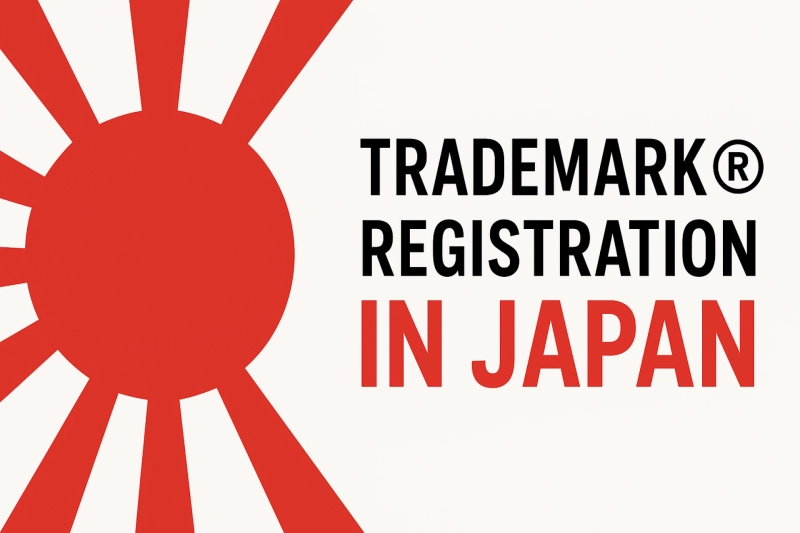Japan, known for its innovation and global brand recognition, provides one of the most sophisticated trademark protection systems in the world. For any business entering the Japanese market, securing a trademark is essential to safeguard intellectual property rights and ensure long-term brand value.
Understanding the trademark registration in Japan process, from filing a trademark application in Japan to maintaining exclusive rights, is crucial for companies, start-ups, and brand owners operating in this competitive landscape.
Overview of Trademark Protection in Japan
Trademark law in Japan is governed by the Japanese Trademark Act, administered by the Japan Patent Office (JPO). The system provides protection for words, logos, symbols, shapes, colours, sounds, and even motion marks.
Trademarks registered under the Japanese trade mark register grant their owners exclusive rights to use and defend the mark across Japan. Foreign applicants enjoy equal protection under Japan’s membership in key international agreements such as:
- The Paris Convention
- The Madrid Protocol (for international applications)
- The TRIPS Agreement
This ensures that overseas brand owners can seamlessly extend protection to Japan through international filings or direct national applications.
Why Register a Trademark in Japan
A registered trademark provides several strategic advantages, including:
- Exclusive ownership of the mark across Japan.
- Legal recourse against infringement or counterfeiting.
- Enhanced brand value for licensing or franchising opportunities.
- Stronger consumer recognition in Japan’s highly brand-conscious market.
- Protection under the first-to-file system, meaning early filing is critical.
Whether you plan to sell goods, launch services, or expand a global brand, a Japan trademark application is the foundation of brand protection.
Filing a Trademark Application in Japan
The process of trademark registration in Japan involves several structured steps overseen by the JPO.
1. Pre-Filing Search
Before filing, conduct a Japanese trade mark register search to check for similar or identical marks. This helps reduce the risk of objections or rejection during examination.
2. Application Filing
A trademark application in Japan may be filed directly with the JPO or through the Madrid System for international applications. The application must include:
- The applicant’s full name and address.
- Representation of the mark (word, logo, or both).
- Description of goods and services (classified under the Nice Classification).
- A declaration of intent to use the mark.
3. Examination
After submission, the JPO conducts a substantive examination to determine registrability. Examiners check distinctiveness, similarity to existing marks, and compliance with statutory requirements.
4. Publication for Opposition
If the examiner approves the mark, it is published in the Japan Trademark Gazette for a two-month opposition period. During this time, third parties may file objections based on prior rights.
5. Registration and Certificate
If no opposition is filed (or if any is dismissed), the mark proceeds to registration. The applicant must pay the registration fee, after which the JPO issues a certificate of registration.
6. Renewal
Trademarks in Japan are valid for ten years from the registration date and can be renewed every ten years indefinitely. Renewal can be filed up to six months before expiration, or within a grace period thereafter (with additional fees).
Online Trademark Filing in Japan
Japan’s intellectual property system is fully digitised. Applicants can now complete the Japan trademark application process online through the JPO’s electronic filing platform.
The online system offers:
- Secure digital submissions.
- Electronic fee payments.
- Status tracking and updates.
- Faster communication with examiners.
International applicants using the Madrid Protocol can designate Japan in their international trademark application, simplifying multi-jurisdictional protection.
Common Challenges in Japanese Trademark Applications
Although the process is structured, applicants may face the following challenges:
- Similarity objections with existing marks.
- Non-distinctiveness if the mark describes common words or features.
- Translation and transliteration issues for non-Japanese brands.
- Opposition by local businesses with prior rights.
Working with a professional IP representative ensures accuracy in the Japan trademark application, helps overcome office actions, and prevents costly delays.
Foreign Applicants and the Madrid Protocol
Foreign companies without a registered office in Japan must appoint a local patent or trademark attorney to act as their representative.
Japan’s membership in the Madrid Protocol allows applicants to extend an existing international application to Japan by designating the country in their filing. This simplifies the process, reduces translation costs, and aligns renewal dates across multiple jurisdictions.
Trademark Renewal and Maintenance
After registration, maintaining your mark’s validity is essential. Trademark owners should:
- Monitor the market for potential infringements.
- File renewals every ten years.
- Update ownership details when required.
- Record licences or assignments with the JPO.
Failure to renew on time can lead to cancellation, allowing third parties to register similar marks.
Trademark Enforcement in Japan
The Japanese legal system provides strong protection for trademark owners. Infringement can be addressed through:
- Civil actions (injunctions and damages).
- Criminal penalties for counterfeit activities.
- Customs enforcement to prevent import or export of infringing goods.
Swift action by a qualified intellectual property attorney ensures your rights are preserved and enforced effectively.
Key Takeaways
- File early under the first-to-file system.
- Conduct a comprehensive search on the Japanese trade mark register.
- Use accurate translations for non-Japanese marks.
- Renew every ten years to maintain protection.
- Engage an experienced IP professional for smooth registration and enforcement.
Conclusion
Registering a trademark in Japan is a strategic investment for brand owners looking to operate in one of Asia’s most advanced markets. With a clear understanding of the trademark application in Japan process and compliance with JPO regulations, businesses can secure reliable protection and build long-term brand credibility.
For professional assistance with filings, oppositions, and renewals, Kayser & Company offers comprehensive trademark legal services tailored for domestic and international clients.



